We’ve completed our second full rotation of the twelve classes in the Player’s Handbook, not to mention taken a deep dive into the first 5 levels of D&D’s thirteenth class, the inventive and arcane Artificer! This wave of the Class 101 series will appraise every subclass within the Player’s Handbook and break down each subclass’s strengths, weaknesses, thematic elements, and everything else a player would want to know before playing that subclass. Because of this, you will need to own the Player’s Handbook (or purchase the subclass a la carte on the Marketplace) in order to make full use of this series.
The paladin class is a role bursting with story. When you take up the mantle of paladin, you commit to being a warrior dedicated to an ideal, a cause, or even a person—and when you swear your sacred oath at 3rd level, you vow to uphold tenets that resonate within your very soul. This unflinching devotion fills you with magical power, giving you strength to uphold your vows in the face of overwhelming odds. The Oath of Vengeance is an oath of blood and steel, and it is not one to be taken lightly.
Check out other articles in the Paladin 101 series, like our broad overview in Paladin 101: A Beginner’s Guide to Divine Justice, Paladin 101: Oath of Devotion, and Paladin 101: Oath of the Ancients. If you’re interested in playing other classes, check out the entire Class 101 series.
Story of the Oath of Vengeance
“Please!” A human prostrated himself on the dungeon floor before a warrior dressed in sleek, blood-red armor and wrapped in a black cloak. The groveling crime lord had a ratty face and a phlegmy voice, and trembled before the crimson avenger who towered over him. “You’ve beaten me! My empire is in shambles, my suppliers have all abandoned me. Please let me live! You have nothing more to take from me!”
“No mercy for the wicked,” the paladin said, her voice muffled within her helmet. “Your minions have lived because I allowed them to; ordinary foes might win my mercy, but my sworn enemies do not.”
“But they yet run free!” the crime lord whined. “Think of the harm they will do, every second you waste upon me you allow them to become stronger.”
“Fight the greater evil,” the paladin recited dispassionately. “I will not waste my time trifling with lesser evils—you are my target. I admit, I have my fears. Any one of the faithless scum you employed may blossom into another tree of evil. But I must not let my qualms get in the way of exterminating the greater evil. And that is you.”
She raised her spear and her glowing eyes glinted from within her helmet. “Make peace with whatever god you give your pathetic prayers to. Beg them for mercy, for I will show you none.”
Oath of Vengeance Features
Oath of Vengeance paladins are skilled with keen blades, healing magic, and magical abilities that let them hunt down their prey. The paladin gains access to four subclass features at 3rd, 7th, 15th, and 20th level. You can read all of the Oath of Vengeance features in the Player’s Handbook. In summary, your subclass features allow you to:
- Channel your oath’s divine power to freeze a foe with fear, or mark a foe for death.
- Gain permanent access to spells that define your oath.
- Pursue fleeing creatures that you strike with an opportunity attack.
- Retaliate against creatures marked by your divine power whenever they attack.
- Temporarily transform into an angel of vengeance.
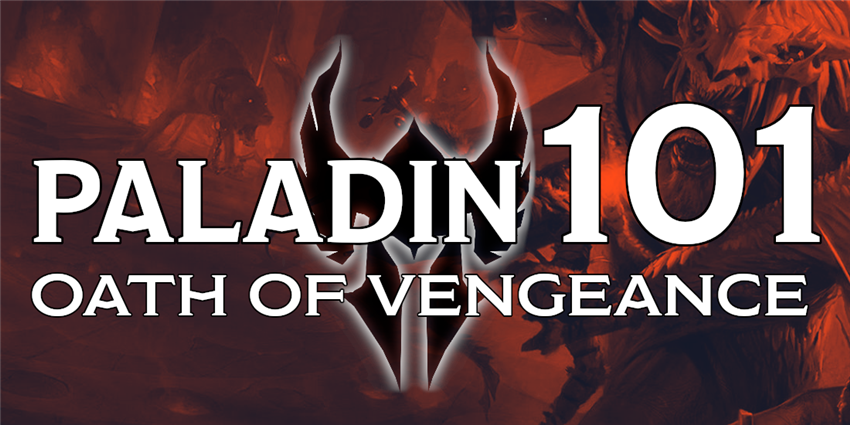
Benefits of the Oath of Vengeance
The paladin class is a very interesting beast in combat. Paladins tend to use heavy armor and other defensive class features to stoically survive damage, and then create huge spikes of damage with their high-powered Divine Smites. Then, after battle, they can use Lay on Hands to heal up any (or at least a part of the) damage they took in the fight. The Oath of Vengeance encourages paladins to play less defensively by giving them tools that allow them to apply constant offensive pressure to their enemies.
One of the most significant benefits of your paladin oath are your Oath Spells. Most of these spells come from outside the paladin spell list, meaning that these spells, in addition to always being prepared, also vastly expand your abilities. These spells mostly come from the wizard spell list, and focus on limiting your foes’ movement (e.g., hold person) while allowing you to move freely (e.g., misty step). It also grants you hunter’s mark, a powerful spell with both combat applications and exploration applications—granting extra damage whenever you hit your marked target, and making it easier to track down your target if they flee.
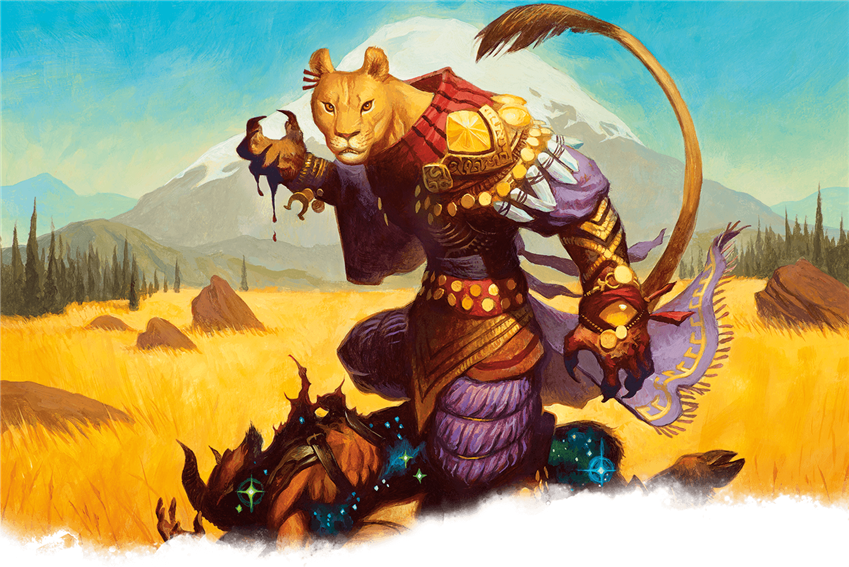
Drawbacks of the Oath of Vengeance
It’s possible to play the Oath of Vengeance in the “standard” paladin way, by saving all of your spell slots to fuel your explosively powerful Divine Smite feature. However, it can be just as useful to spend your spell slots on longer-term offensive abilities like hunter’s mark. If you try to play an Oath of Vengeance paladin like you would any other paladin, you’ll easily miss out on some of the class’s most interesting features.
Compounding this fact is the subclass’s reliance on saving throws. Many of the things that make the Oath of Vengeance stand out from the pack, including a number of its Oath Spells and one of its unique Channel Divinity options, Abjure Enemy, require your target to fail a saving throw for the feature to have any effect at all. Since you’re a paladin who wants to get into melee combat, you’re already likely to have invested in high Strength and Constitution scores. If you used point buy to generate your ability scores, you probably don’t have enough points to invest in a strong Charisma score, meaning that it will be easy for your foes to resist your spells.
Because of the power of your spells, it might be worth simply letting your Constitution score be lower than most paladins, and accepting that you’ll have low hit points. It makes sense to prioritize Strength and Charisma to fuel your physical and magical offensive powers, since this subclass focuses on hunting down foes and dealing sustained damage. And even though you’ll have to contend with lower-than-average hit points for your class, you’re still proficient in heavy armor and shields, allowing you to keep your physical defenses high, even if your Constitution is low.
Suggested Build
Like most classes in D&D, the paladin doesn’t choose their subclass until 3rd level. If you’re playing a paladin from 1st level and think you want to enter into an Oath of Vengeance later, you should choose a race that improves your Strength (or Dexterity) score and also your Charisma score. Strength affects how hard you hit with most melee weapons, and gives you the ability to wear heavy armor without penalty. Dexterity makes you better with ranged or finesse weapons, and improves your Armor Class while in light or medium armor. Your Charisma score improves a number of your paladin class features, as well as your spell save DC, which makes it harder for foes to resist your spells. Because of this, your Strength or Dexterity score should be your highest ability score, and your Charisma should be your second highest score.
While all paladins are well-suited towards wearing heavy armor and using powerful, Strength-based weapons, you can also forgo heavy armor and use finesse weapons instead by prioritizing your Dexterity score instead of your Strength score. Dexterity-focused paladins are fairly uncommon, especially compared to Dexterity-based fighters and rangers, since their powerful Divine Smite ability can only be activated using a melee weapon attack.
Dark elves make excellent Oath of Vengeance paladins, thanks to their bonuses to Charisma and Dexterity, coupled with their innate spellcasting. For a paladin who wants to focus on raw physical power, dragonborn make for excellent paladins thanks to their bonuses to Strength and Charisma. If you aren’t too concerned with your spellcasting abilities, races like dwarf and half-orc help make you physically resilient, with impressive innate bonuses to Strength and Constitution. And, thanks to their versatility, humans are never a bad choice for any class.
As usual, your character’s background is up to you. Paladins are often acolytes who have received martial training, or soldiers who have found a sacred calling, but paladins from other backgrounds can make for exciting unlikely heroes—especially since the Oath of Vengeance are committed more towards their own ideals of justice than toward any sacred cause. The Urchin or Criminal backgrounds work well for characters whose backstories demand that they have a bone to pick with the evildoers of the world.
Select EQUIPMENT when creating a character. You should probably choose a martial weapon and a shield, even if you’re a Dexterity-based paladin—for reasons that will be explained below. If you’re playing a Strength-based paladin, you can’t go wrong with an iconic longsword and shield, and a Dexterity-based paladin can use a rapier and a shield in tandem. Choosing five javelins is your best bet, since you’ll want a way to fight from range.

Fighting Style
At 2nd level, you can choose a Fighting Style. You have four choices, each of which makes you slightly better in a certain type of combat role, but doesn’t preclude you from using alternative tactics. The Defense style is a good, passive buff; you gain +1 AC while in armor. Great for surviving, but not very proactive. The Dueling style is great if you fight with a one-handed weapon, and improves your damage even if the other hand is holding a shield. Great Weapon Fighting is useful if you like to fight with two-handed weapons, and can improve your damage even if you’re wielding a one-handed versatile weapon —like a longsword—in both hands. Finally, the Protection style helps make you a formidable tank, allowing you to deflect incoming blows if you stand next to your allies.
Notably, the Archery and Two-Weapon Fighting styles—two fighting styles available to fighters and rangers—are absent from this list. Consider asking your Dungeon Master if you can use one of these styles if you’re playing a Dexterity-based paladin. These options aren’t game-breaking, so as long as you’re playing in a campaign where strict adherence to the rules isn’t required (such as in D&D Adventurers League games), I highly recommend that your DM allow house ruling these fighting styles into the paladin class.
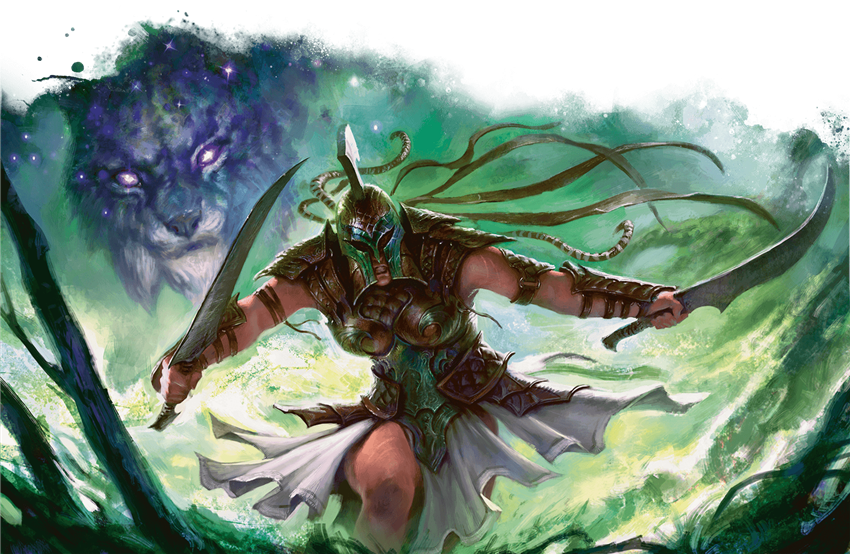
Spells
The paladin also gains access to spells at 2nd level, drawing from their class’s unique spell list. While your spell selection is more limited and you gain access to more powerful spells more slowly than “full caster” classes, you balance it out with your robust combat arsenal. Take this time before you gain your subclass at 3rd level to feel out what your role in the party is. That way, when you do gain your subclass (as well as the host of permanently prepared Oath Spells that come with it), you’ll know what spells your party needs you to have access to on a regular basis.
Fortunately, you can choose a different set of spells at the start of each new day, just like a cleric. The entire paladin spell list is available to you, so you can adapt your spell selection to whatever challenges you think you’ll be facing. Either way, choosing a “standard loadout” of spells that you can rely upon on an average adventuring day is useful. You can prepare a number of paladin spells equal to half your level (rounded down) plus your Charisma modifier. So, if you’re a 2nd-level paladin with a Charisma score of 16 (+3), you can prepare four spells from the paladin spell list. To give yourself a well-balanced loudout, choose two spells labeled OFFENSE, one labeled DEFENSE, and one labeled SUPPORT. Note that this list only includes some spells from the Player's Handbook, so if you want to choose more unusual spells, or have other sources like Xanathar's Guide to Everything, you'll have to do a little self-directed research. This list is just here to get you started if this is your first time playing an Oath of Vengeance paladin.
- Bless (SUPPORT)
- Compelled duel (DEFENSE)
- Cure wounds (SUPPORT)
- Divine favor (OFFENSE)
- Searing smite (OFFENSE)
- Shield of faith (DEFENSE)
- Thunderous smite (OFFENSE)
- Wrathful smite (OFFENSE)
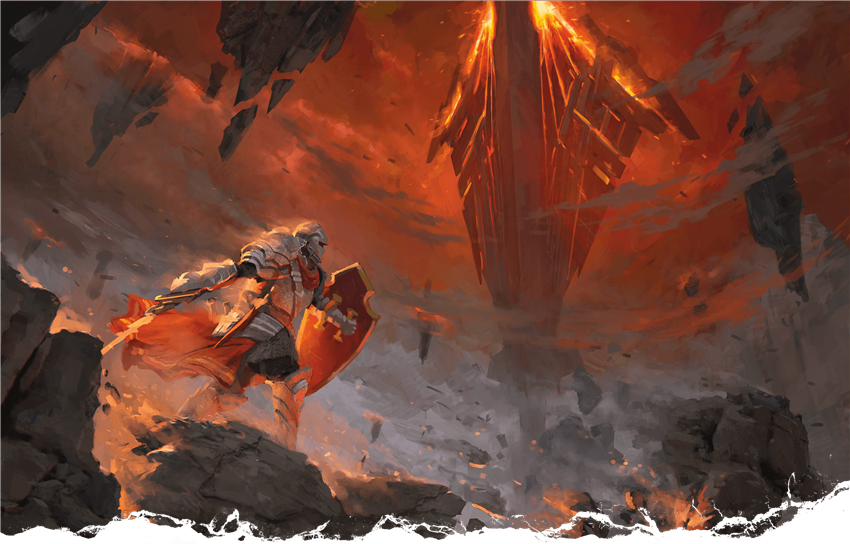
Feats
Once you’ve improved your Strength, Dexterity, or Charisma score to 18 or 20, you can increase your power with a few useful feats. The following feats are good picks for Oath of Vengeance paladins, and will improve your reliability in your own desired area of expertise:
Great Weapon Master. If you wield a big weapon and want to deal massive damage, this is your go-to. It’s less vital to you than a fighter, however, since you have Divine Smite for burst damage. Most paladins would generally rather hit so you can activate your smites than gamble on a bit of extra damage—but since the Oath of Vengeance has a variety of damaging spells to cast rather than smiting, Great Weapon Master can make it easier to deal damage without spending your limited resources.
Polearm Master. You don’t typically use your bonus action for anything except for spells like wrathful smite, so being able to turn it into another attack (and thus, another chance to use your Divine Smite, which doesn’t cost an action to activate) is very attractive.
Resilient (Constitution). Like War Caster (below), this feat makes it harder to lose concentration on your spells by granting you proficiency in Constitution saving throws—while also improving your Constitution score by +1. Its bonus to making saves to maintain concentration isn’t as good as advantage (at low levels), but it gives a broader spectrum of bonuses.
Shield Master. Paladins love fighting with a sword in one hand and a shield in the other, so amping up your shield-using skills makes sense.
Skulker. An unusual feat for paladins to take, this feat is suitable for silent hunters who stalk their prey through darkened streets and caverns. This feat is especially good if you’re playing a Dexterity-focused paladin.
War Caster. This feat suits the paladin playstyle perfectly by making it harder for your concentration to be broken in the heat of battle. Since paladins only gain a few precious spell slots, concentration spells are a good way to stretch their magic as far as possible—so it feels terrible when you cast a concentration spell, only to be hit by a goblin or two next round and lose your concentration from some meager damage.

If you want more advice for building a paladin, check out Paladin 101. Have you ever played an Oath of Vengeance paladin? What advice would you give to players that want to play this subclass?
Next week, delve into the darkness of the Underdark with the Gloom Stalker ranger!
Create A Brand-New Adventurer Acquire New Powers and Adventures Browse All Your D&D Content
 James Haeck is the lead writer for D&D Beyond, the co-author of Waterdeep: Dragon Heist, Baldur's Gate: Descent into Avernus, and the Critical Role Explorer's Guide to Wildemount, a member of the Guild Adepts, and a freelance writer for Wizards of the Coast, the D&D Adventurers League, and other RPG companies. He lives in Seattle, Washington with his fiancée Hannah and their animal companions Mei and Marzipan. You can find him wasting time on Twitter at @jamesjhaeck.
James Haeck is the lead writer for D&D Beyond, the co-author of Waterdeep: Dragon Heist, Baldur's Gate: Descent into Avernus, and the Critical Role Explorer's Guide to Wildemount, a member of the Guild Adepts, and a freelance writer for Wizards of the Coast, the D&D Adventurers League, and other RPG companies. He lives in Seattle, Washington with his fiancée Hannah and their animal companions Mei and Marzipan. You can find him wasting time on Twitter at @jamesjhaeck.








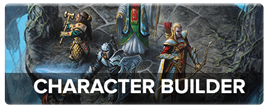
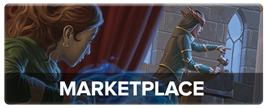
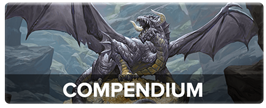
-
View User Profile
-
Send Message
Posted Oct 9, 2020Don't you wish there was a way to unsubscribe from articles?
-
View User Profile
-
Send Message
Posted Oct 9, 2020Go to notifications, click settings, then go to the my notifications tab, you can unsub from threads there
-
View User Profile
-
Send Message
Posted Oct 9, 2020I've always found it more useful in tracking the target than the minor extra damage chance.
-
View User Profile
-
Send Message
Posted Oct 9, 2020You can get around this by making an organization, institution, or type of monster your sworn foes. So 'Demon Worshippers' or 'Liches' or 'Vampires' or 'GAAAAHHHBBLIINNSS' or The Cult of the Dragon or some such make this work. Once you kill that one lich, there's always another. Or if you take out the local cult leader, there's another cell of the cult over in the next country.
-
View User Profile
-
Send Message
Posted Oct 10, 2020Villain about to get his cheeks clapped "BUt..But, isn't it your job to Forgive? isn't that what the Gods wants?..."
Vengeance Pally" Forgiveness is a matter that the Gods decides, im just in charge of the Presentations..."
*SMITE*
-
View User Profile
-
Send Message
Posted Oct 10, 2020In the recommended Feats i'll also add the Spellsniper.
While not many of the paladin spells are ranged and require an attack roll.
The fact that you can get a Cantrip for a Paladin ain't a BAd deal, specially if for some circumstances you are, well simply too far away to hit and Smite anything.
Then taking Spellsniper:Bard/Sorceror/Warlock will give you some choices.
A Pally with a 240ft Eldritch Blast that ignores Covers when he can't reach the target in melee, is not something to ignore...
-
View User Profile
-
Send Message
Posted Oct 10, 2020Fascinating idea...
-
View User Profile
-
Send Message
Posted Oct 10, 2020I would reccomend Volo’s Guide first. It gives great insight on how to better play and individualize monsters, gives extra character advice, and gives you new monsters to play with. However, I have not seen the entirety of MToF, so my argument is partially biased.
-
View User Profile
-
Send Message
Posted Oct 10, 2020I usually try to help them out a bit. We all have a session zero. If they put that their parents were killed, I will add that to the story and if the player doesn't play off it or write their own story from there, there is usually something evil that comes back to bite them. So if the Paladin feels the need to take revenge on a shopkeeper because the paladin thought it was evil the guy was trying to swindle them I would have a group of commoners take up torches and pitch forks and try to drive him out. I like the idea of shared responsibility. If they write anything at all for a background then they have started that process. They gave you a hook. You need to help them to flesh it out. For instance, I am running CoS with a group right now. The party didn't know one another and wrote crappy back stories. Eventually they discovered that they have been reincarnated and have returned to defeat Strahd from hundreds of years ago.
Once I was a player in a game and in the story I killed a thug right away. He was evil but I had in fact murdered someone. My character spent the rest of the session trying to redeem himself. It was the best story I ever played. I think you have to be flexible.
-
View User Profile
-
Send Message
Posted Oct 11, 2020Great article, with only one BIG GLARING issue..... WHERE IS SENTINEL IN YOUR FEATS LIST???
-
View User Profile
-
Send Message
Posted Oct 11, 2020There's a few RP options... My oath of vengence paladin, while pursuing his revenge, kind of went down a very evil path. He's a half-orc who grew up being abused and bullied by all the full-blooded orcs around him, the worst of which came from his father. So on his vengence path he had a habit of basically causing orc genocide. He would first kill all the orc warriors then kill all the women and children he could get his hands on. Right after he killed his father, my DM ruled I had become an oath-breaker paladin, at which point I multi-classed into warlock. He now faces a road of redemption ahead of him.
-
View User Profile
-
Send Message
Posted Oct 11, 2020He swore a terrible, evil oath, and fulfilled it, and that made him an oathbreaker?
-
View User Profile
-
Send Message
Posted Oct 12, 2020Any one else think of Doom Slayer when reading about this subclass?
-
View User Profile
-
Send Message
Posted Oct 13, 2020I personally don't think that's a bad thing. Paladins are always played as shining examples of good in the world but if you think about it, they follow the example/will of their god. I love playing paladins that worship an evil god. It offers a level of storytelling lawful good paladins don't always give a campaign. And an Oath of Vengeance paladin lends itself towards this especially well.
-
View User Profile
-
Send Message
Posted Oct 13, 2020For my OoV Pally, I was a soldier who was hand picked with others for a special mission. Turns out the officers that picked us weren't actually soldier's, but sort of profiteers that used us to kill people who were protecting relics. We were told that these relics in the hands of the opposition would decimate us and we got to them first. Well, once we got them, the officer imposters split. My PC, feeling extreme guilt for killing innocent people became an OoV paladin to seek out those "officers" and to exact the revenge for those that we sentenced to death.
-
View User Profile
-
Send Message
Posted Oct 14, 2020The vengeance paladin subclass very much fits the Avenger class for 4e. I see the three PHB subclasses as lawful good, neutral good and chaotic good variations. With Xanathar's Guide adding a Lawful Evil and a Pacifist/Redeemer subclass
-
View User Profile
-
Send Message
Posted Oct 14, 2020id say its more of a neutral subclass. the book says something along the lines of you yourself dont have to be good so long as your end goal is. now oath of conquest is a perfect setup for a lawful evil/neutral evil paladin
-
View User Profile
-
Send Message
Posted Oct 14, 2020agreed. i took the player seat for once while one of my players ran curse of strahd and another player created an oath of vengeance paladin. he would constantly say "im an oath of vengeance paladin, that guy pissed me off so im 100% going to kill him" and it was so annoying to hear him say it like every two seconds given that i ran a legitimate oath of vengeance paladin who had an actual purpose
-
View User Profile
-
Send Message
Posted Oct 14, 2020The best advice I can give is to talk to your problem player one-on-one. Be honest with them about why this behavior annoys you, and that it's causing you to have less fun while playing. They may not be interested in deep character roleplay, and getting into their character's head might be uninteresting for them. Try and find a compromise!
-
View User Profile
-
Send Message
Posted Oct 15, 2020He ruled that I did not fight the greater good, and killed innocent lives because of my petty hatred towards the entire orc race.